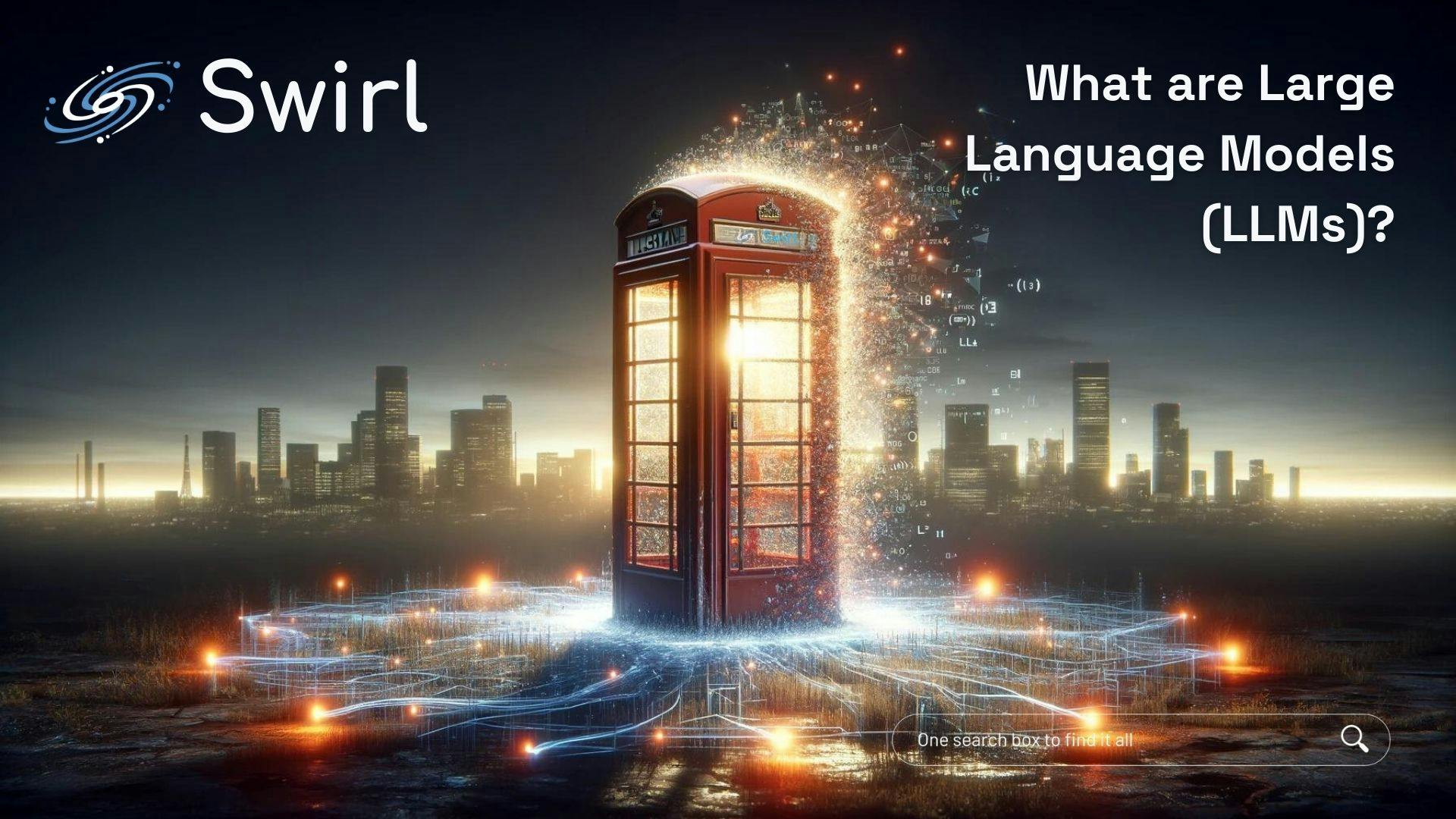What are Large Language Models (LLMs)?

In Artificial Intelligence (AI), Large Language Models (LLMs) have emerged as game changers. Cambridge announced “Hallucinate” as the word of the year 2023, all due to the sheer force of the rise of LLMs. With their uncanny ability to read, comprehend, and generate human-like text, LLMs are changing how we interact with computers, empowering new forms of creativity, and opening doors to a future where human-AI collaboration reaches new heights.
Let’s take a detailed journey into what LLMs are, how they work, their evolution, and their potential.
Understanding Large Language Models
- Imagine LLMs as incredibly advanced autocomplete engines. While a typical autocomplete suggests single words, LLMs can continue sentences, paragraphs, or stories, drawing upon their vast language knowledge.
- At their heart, LLMs are statistical machine learning models that have been “trained” on astronomical amounts of text-based data. This data encompasses a rich tapestry of sources – books, articles, code, websites, conversational transcripts, etc.
- Through this exposure, LLMs learn the intricate patterns, relationships, and nuances within human language. They gain the power to generate text, translate between languages, write different kinds of creative material, and answer your questions comprehensively and informally.
How Do LLMs Work?
The science behind LLMs is rooted in deep learning, a subfield of machine learning that involves training artificial neural networks on vast amounts of data. Using unsupervised learning, these models are trained on massive textual datasets, such as web pages, books, and articles.
During training, the model learns to predict the next word or sequence of words based on the context provided by the previous words. This process is repeated billions of times, allowing the model to capture intricate patterns and relationships within the language.
Here’s a breakdown of three simple steps.
- Vast amount of Data: The foundation of any powerful LLM lies in the data it consumes. LLMs are trained on text corpora containing billions, sometimes even trillions, of words. This data’s sheer volume and diversity directly influence the model’s performance and capabilities.
- Neural Networks and the Transformer Architecture: LLMs primarily leverage the power of neural networks, mathematical algorithms loosely inspired by the structure of our brains. These networks enable them to recognize complex patterns in data. A breakthrough in LLM development has been the Transformer architecture. Its core innovation is an ‘attention mechanism’ we’ll explore shortly.
- The Language of Probability: During training, LLMs analyze the statistical probabilities of how words and phrases tend to follow each other in language. Essentially, they learn to predict the next most likely word to continue any given sequence of text.
The Art of Text Generation
- It’s important to understand that LLMs don’t simply store all the text they’ve encountered. Instead, through massive data exposure, they develop a complex statistical model of how language operates. Imagine this as a giant map of word probabilities, reflecting how words relate to and predict one another.
- When you provide text input to the LLM, it navigates this map, word by word, always choosing what its model calculates as the most likely continuation based on the patterns it has learned. It’s like a meticulously calculated word-selection journey.
The Attention Mechanism: A Focus Lens for LLMs
The attention mechanism is a crucial component that underpins the success of LLMs. It allows the model to selectively focus on different input parts when generating text, enabling it to produce coherent and context-aware responses.
The attention mechanism assigns weights to different input parts, indicating their relative importance for the current task. This allows the model to focus on the most relevant information while generating text, resulting in more natural and contextually appropriate responses.
- The ‘attention mechanism’ within the Transformer architecture is pivotal to LLMs’ success. It allows them to focus on specific parts of the input text when generating a response, helping avoid misinterpretations and prioritizing the most relevant information.
- Imagine an LLM answering a question like, “What color was the bicycle in the story, and where was it parked?”. The attention mechanism helps the LLM zero in on the keywords “color,” “bicycle,” and “parked” within the entire story text, enabling it to craft an accurate and contextually relevant answer.
The Evolution of LLMs: From Basic to GPT-4V & Beyond
LLMs have progressed remarkably over time. The development of LLMs has been a remarkable journey, with each milestone pushing the boundaries of what was previously thought possible. It all started with the introduction of transformer models, which revolutionized the field of NLP and paved the way for more powerful language models.
Early LLMs, such as GPT (Generative Pre-trained Transformer) and BERT (Bidirectional Encoder Representations from Transformers), demonstrated the potential of these models to understand and generate human-like text. However, the release of GPT-3 in 2020 truly showcased the remarkable capabilities of LLMs.
With over 175 billion parameters, GPT-3 was a game-changer, capable of performing a wide range of tasks, from creative writing to code generation, with remarkable fluency and coherence.
Since then, the field of LLMs has continued to evolve rapidly, with models like PaLM (Pathways Language Model), LaMDA (Language Model for Dialogue Applications), and Claude (Anthropic’s AI assistant) pushing the boundaries even further.
Here’s a glimpse at their journey:
- Early LLMs: These models were relatively simple and primarily used for essential text completion or sentence prediction tasks.
- GPT Series (Generative Pre-trained Transformer): Developed by OpenAI, GPT models marked a turning point. They showcased the power of the Transformer architecture and unlocked the potential for more sophisticated text generation capabilities.
- BERT (Bidirectional Encoder Representations from Transformers): Google AI’s BERT model introduced a significant advancement. Considering words in both left-to-right and right-to-left contexts enhanced LLMs’ understanding of language nuances and ambiguities.
- Today’s LLMs: Models like Google’s LaMDA, Gemini, Pathways Language Model (PaLM), Megatron-Turing NLG, GPT-4V, Mixtral, LlaMa, Claude and numerous others continuously push boundaries. They exhibit remarkable fluency and near-human levels of comprehension and can engage in surprisingly natural conversations.
The Future of Large Language Models: A World of Possibilities
The potential applications of LLMs are vast, with far-reaching implications across industries:
- Revolutionizing Communication: LLMs have the power to transform how we communicate with technology:
- Intelligent Chatbots and Virtual Assistants: LLMs will continue to improve conversational AI. Expect chatbots beyond simple FAQ interfaces, becoming virtual companions capable of nuanced, engaging interactions and providing exceptional customer support around the clock.
- Personalized Email Generation: Imagine an LLM drafting your emails based on keywords, tailoring them to the recipient’s tone and interests, saving time, and refining your professional communication.
- Supercharging Content Creation: LLMs bring efficiency and new creative avenues to the world of content creation:
- Article and Report Generation: LLMs can generate factual summaries, reports, or news articles, streamlining research for journalists and professionals across fields.
- Creative Writing Assistance: For scriptwriters, novelists, and poets, LLMs can become idea generators, help combat writer’s block, and even co-create stories that push the boundaries of conventional narrative structures.
- Marketing and Social Media: From catchy product descriptions to engaging social media posts, LLMs will increasingly assist marketers in crafting tailored, attention-grabbing content.
- Breaking Down Language Barriers: High-quality translation is another area where LLMs shine:
- Real-time Translation: Imagine language barriers disappearing as LLMs enable seamless, real-time translation across many languages, fostering more excellent communication on a global scale.
- Accessible Content: LLMs can make content accessible to wider audiences by converting complex text into easy-to-understand summaries or translating content across multiple languages.
- Enhanced Education and Learning: The potential of LLMs in education is significant:
- Personalized Tutoring: Adaptive virtual tutors powered by LLMs could tailor lessons and explanations to each student’s learning style and pace, revolutionizing the concept of individualization within education.
- Interactive Learning Materials: LLMs can create engaging quizzes, generate questions, and provide instant, detailed feedback, enhancing the learning experience.
- Accelerating Scientific Research: Researchers can harness the power of LLMs in various ways:
- Analyzing Complex Datasets: LLMs can sift through massive research datasets, identifying patterns and insights that might elude human researchers, accelerating the discovery process.
- Scientific Writing Assistance: Researchers can leverage LLMs to generate drafts of scientific papers and summaries of existing research and even assist in grant proposal writing.
- Ethical Considerations: As with any powerful technology, LLMs’ responsible and ethical use is essential. It’s vital to address concerns like:
- Biases: LLMs are trained on existing data. They can inherit societal biases. Efforts must be made to reduce bias and ensure these models promote inclusivity.
- Misinformation: Measures to counter using LLMs to generate misleading or harmful content are crucial.
- Transparency: Users should clearly understand when interacting with an LLM to avoid misinterpretations or misplaced trust.
LLMs: Generating Images from Words
A fascinating development is the emergence of multimodal LLMs. These models expand beyond text, demonstrating the remarkable ability to generate images based on descriptive text prompts. Models like DALL-E 2, Imagen, and Stable Diffusion are opening doors to a world where an AI-powered “artist can directly visualize your imagination.”
Conclusion
Large Language Models are a testament to the remarkable advancements in artificial intelligence and the power of deep learning. These models can revolutionize how we interact with technology, enabling more natural and intuitive communication and opening up new avenues for creativity and innovation.
As we continue exploring the capabilities and implications of LLMs, we must remain vigilant and proactive in addressing the ethical and societal concerns accompanying such powerful technologies. By embracing responsible development and deployment, we can harness the transformative potential of LLMs while ensuring that they serve the greater good of humanity.
